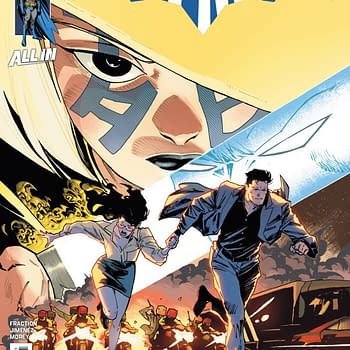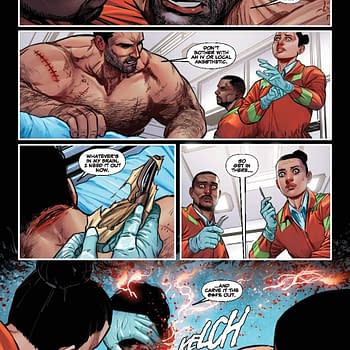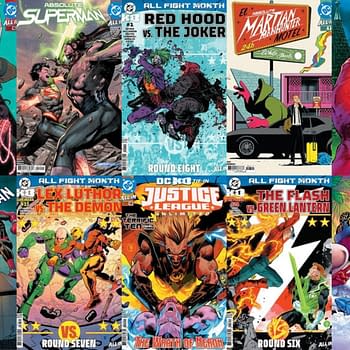Posted in: Comics, Recent Updates | Tagged: Arthur Wyatt, Comics, Dredd: Underbelly, entertainment, Henry Flint, judge dredd, Karl Urban, olivia thirlby
Anderson And Dredd Are The Brain And The Brawn In Dredd: Underbelly
Timothy Carson writes;


Honestly, the confusion can be attributed to my poor reading skills, but I also think the short, succinct dialogue doesn't help. You won't find any villainous monologue-ing in Dredd: Underbelly, seeing as most of the "villains" are simply drug addicts that are high as kites on the latest crazy, Psych. They're all so caught up with their own hallucinations, I doubt they could even verbalize what they are witnessing. The quick-paced dialogue, however, does lend itself to deeper character development, and once I got used to it, I found that I could basically hear the voices of the characters.

The artwork for Dredd: Underbelly is gorgeous, in a word. I know, I know, how typical, calling comic art gorgeous, but you can't judge me until you've read it. I was especially impressed by the muted color palette, courtesy of Chris Blythe. Lots of grays, blues, and pale greens – colors that invoke a heavy atmosphere of despair and poverty. This makes the image of Judge Dredd all the more intimidating, his shiny, red and black helmet popping off the page. I'd probably pee my pants if I saw that helmet approaching me in a dark alley. That helmet means business…and pain. Can't forget pain.
On a more detailed note, the line work in Underbelly is top notch and carefully crafted; the characters are drawn with thick, bold lines that accentuate their strong features – even Judge Anderson. Typically female protagonists are given softer edges to accentuate beauty as well as strength, but not Anderson. She's drawn and painted just as sharply as Dredd, her face carved by heavy, black shadows. Her eyes, however, are left softened a bit, with no strong line work on her lower lid. It makes her close-ups all the more expressive. In the case of Underbelly, the art goes hand-in-hand with the narrative and doesn't overshadow the storytelling. Both aspects utilize one another as tools to propel the story forward and upwards.
To conclude, I enjoyed my romp through Mega City One and all its drug infested inhabitants. Do I suggest you run out and purchase this comic at this very moment? Not really. Will you regret reading this comic on a rainy day? Probably not. I think what hinders the story from really becoming its own entity is that the comic is so closely tied to the movie. One of these days I'll have to see the movie and then re-read Underbelly (again). Maybe I'll gain a new appreciation for the story. Maybe I won't. Guess only time will tell…dunh dunh dunh.
















